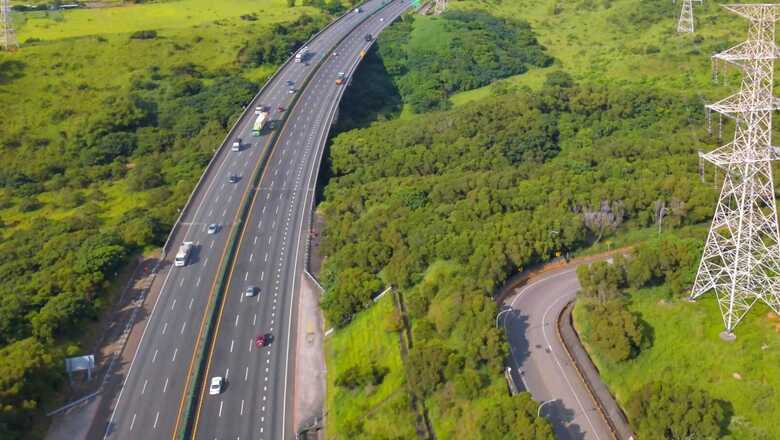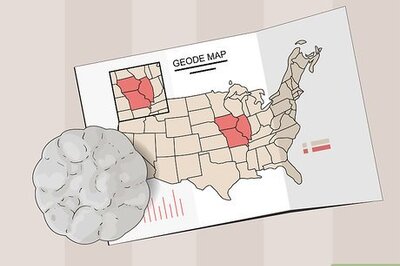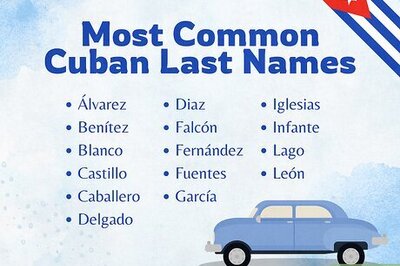
views
As per Census 2011, the percentage of people living in the urban area in India is 31.16%. Due to increase in population, better job-prospects and migration from the rural to urban area there is an underlying demographic tendency towards cities. It has resulted in over-crowding of the cities, more concretization of the urban spaces and a tremendous pressure of the urban-infrastructure. Further, this has resulted in fast depletion of the urban eco-system and hindering the urban environmental planning. We have hardly any space left for trees, forests, birds and animals which are but a part of the larger eco-system to make any city a livable and healthy city.
The health and well being of the urbanites is directly related to the environment in which they live. With more concrete buildings, we have less of oxygen and more of pollution. It is not surprising that many of the cities in India witness Air Quality Index (AQI) which is worrisome and in a few of the cities AQI parameters are many times cross the dangerous mark. Many of our cities are on the brink of a pollution-blast. Air-toxicity is adding to health related issues particularly lungs and respiratory diseases. It is affecting every urbanite irrespective of the luxury and modern amenities he is having.
The only plausible solution which is available is Urban-Forest. Traditionally, the local bodies like Municipalities and Municipal-councils have resorted to tree-plantation where trees are planted alongside the roads, over the road-dividers or at some open areas. We have seen that there are many good initiatives where Government agencies as well as public have involved itself in massive tree plantation. But, the issue which remains with the tree-plantation drives is the maintenance of the already planted trees, the costs involved in maintaining and saving them till they become self-surviving.
The survival rate of tree plantation is very low. Further, this strategy seems to be not very effective considering the level of urbanization, industrialization and concretization of the urban areas and that too at unprecedented rates and scales. So to overcome this problem of survival the only alternative is creating urban forests. The cost involved in planting and maintaining 1000 trees and making a forest and maintaining of 1000 trees may be less than 1/10 of plantation even.
WHAT IS AN URBAN FOREST?
There is a difference between tree plantation and making Urban-forest. Urban Forest is a man-made forest in an urban-set up. This type of forest is planted, developed and created by human and is given the same environment as that of a natural forest. Man-made Urban forest is creating a forest by human-efforts creating all the natural circumstances which exist in a natural forest.. Forest is a world in itself – a natural grown self-sustained eco-system.
Our planet is composed of five basic elements; Panch-Tatva which consist of land and soil, water, air, space and fire. Forest being a micro-cosmos of the planet-earth has all the five basic elements like fertile and rich soil; streams, rivulets, ponds and rivers; Oxygen and other airy gases which are necessary for the survival of the forests, a specific area and space in which it exists, sunlight (fire) which is required for plants to make food and survive.
Due to the unending interaction of these five basic-elements, there springs various types and kinds of plants, birds, animals and host of millions of small creatures. Human being is fast destroying forests for his own needs and greed! Here, each sub-system interacts with each other to make a larger-eco-system on a continuous basis.
Forests are like family of trees where each tree helps the other tree and plants to survive and grow. As per the latest scientific literature, trees help each other exchange nutrients, information and even alert each other against any attack. They protect each other from the vagaries of extreme weather and climatic fluctuations. They exchange water, food and other nutrients through soil.
When we construct a building; the area used by the building is permanently lost from the environment. The purpose of creating these Urban-forests is to restore the imbalance in the forces of nation and restoring the lost forest cover in urban areas. There are many techniques to create a forest. In India, there is an ancient Indian technique of forest making known as ‘Vrikshayurveda’ which is the ancient Indian science of plant life, a body of knowledge that has been compiled by Surapala approximately 1000 years ago.
It discusses various topics related with the science of plant life such as procuring, preserving, and treating of seeds before planting; preparing pits for planting saplings; selection of soil; method of watering; nourishments and fertilizers; plant diseases and plant protection from internal and external diseases; groundwater resources; etc.
The other technique is the latest in vogue which is known as Miyawaki-method which was popularized by Japanese botanist Akira Miyawaki. He advocates that natural forest can be created in urban-areas by using the pattern as existing in a natural-forest and by planting native and bio-diverse trees. There are also ancient Indian forest-making techniques known as Panchvati-Plantation, Triveni-Plantation, Harishankari-Plantation and some of the other prevailing method of forest-plantation.
Urban forest requires minimum area of 2000 square feet and there is no limit of maximum area. It can be planted in open plots, along the drains, along the canal and riverbeds and even in schools, colleges and factory premises.
Benefits of Urban Forests
- They help in reducing the rising temperature of the urban areas by moderating the extreme weather.
- They help in retaining water-table as trees soak much of water and create a water-reservoir. It can help sipping in excess water during the rainy seasons and prevent flood like situation.
- They will improve substantially the AQI of any urban area.
- Further, they will also help in using the bio-degradable urban waste which is an excellent base material for preparing any soil for making urban-forests.
- Urban forests will check the desertification of the soil and will help in maintaining the soil fertility and productivity.
- It will bring back the bio diversity both in terms of flora and fauna.
- It will check the urban pollution with its various variants like air-pollution, water-pollution, soil-pollution and urban waste generation.
Every urban area must have a minimum of 10 urban-forest which can be made in and around the cities so as they can check the menace of pollution.
(The writer is an interior designer. She is also an environmentalist and has co-authored a book by the name ‘Gift Lungs to Future Generations’. The views expressed in this article are those of the author and do not represent the stand of this publication.)
Read all the Latest Opinion News and Breaking News here



















Comments
0 comment